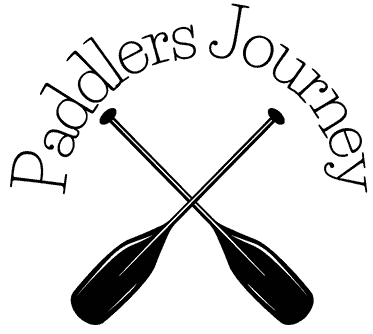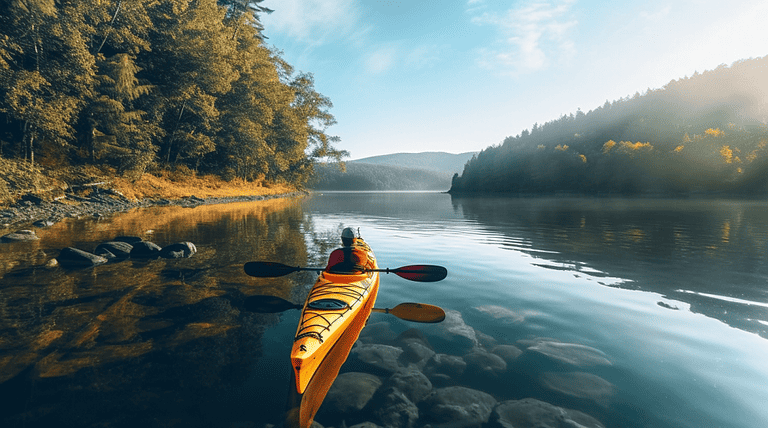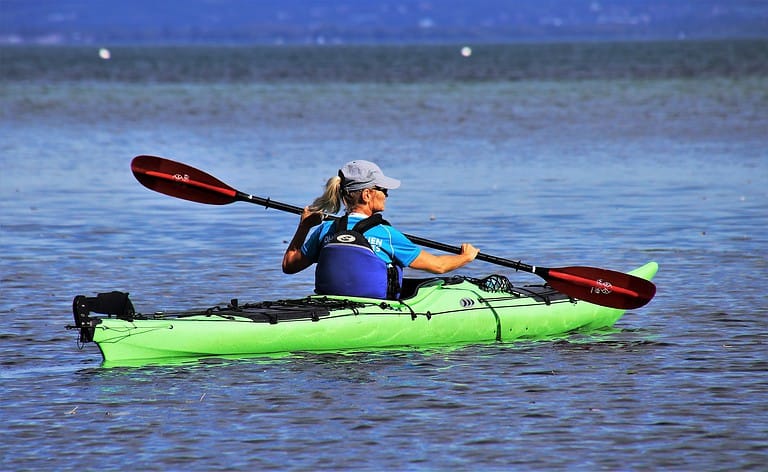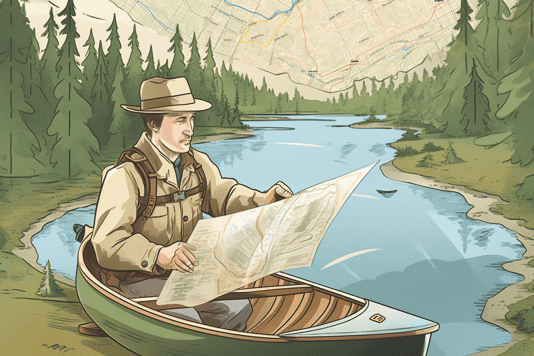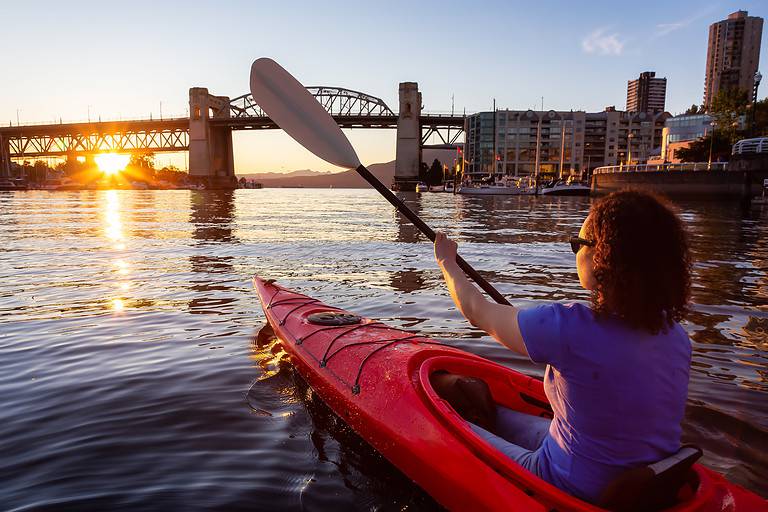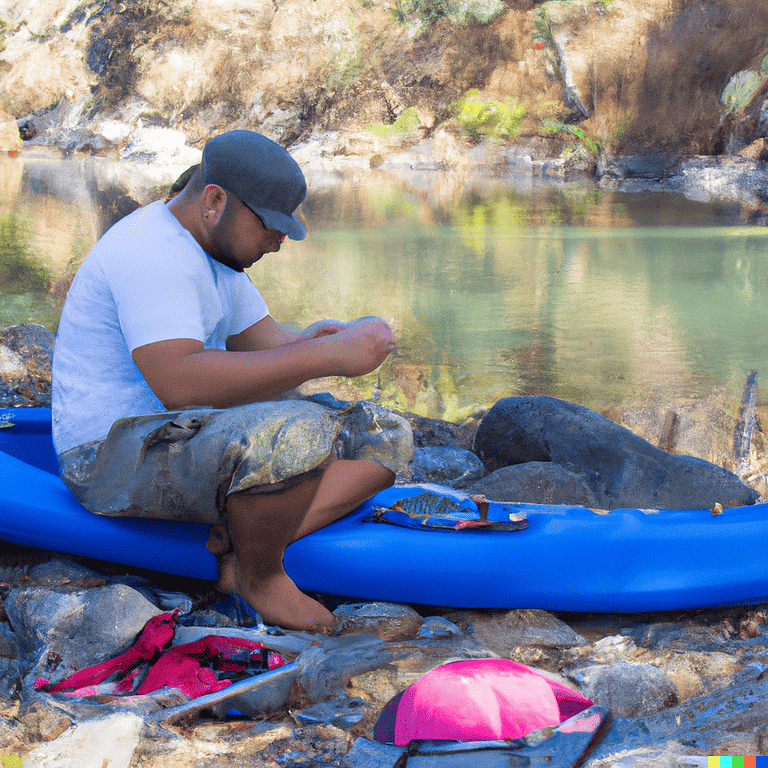The Best Kayaking Vs Paddleboarding
Kayaking vs paddleboarding? The choice between these two water sports can be a tough one. Both activities offer a thrilling and refreshing way to explore the great outdoors but have unique qualities. This article will provide an objective and in-depth analysis of kayaking and paddle boarding, highlighting their similarities and differences. With expert advice and recommendations, we aim to help you make an informed decision based on your preferences, skill level, and desired adventure. So grab your paddles and dive into kayaking versus paddleboarding!
Key Takeaways
- Kayaking and paddle boarding offer unique and thrilling adventures for adventure tourism enthusiasts.
- Kayaking requires upper body strength and coordination, while paddle boarding focuses on core strength and balance.
- Paddleboarding provides a higher vantage point for better views, while kayaking offers stability and the ability to navigate narrow waterways and rougher conditions.
- When choosing between kayaking and paddle boarding, consider factors such as skill level, physical condition, preferred scenery, and desired level of adventure.
Techniques and Skills Required for Kayaking vs Paddleboarding
To excel at kayaking or paddle boarding, you’ll need to master various techniques and skills. Both activities require specific paddle techniques to maneuver through the water effectively. The proper paddle technique in kayaking involves using your core muscles to generate power and control the kayak’s direction. You should hold the paddle with both hands shoulder-width apart, extend your arms forward, and rotate your torso while paddling. Paddleboarding, on the other hand, requires a slightly different approach. To maintain balance and stability on the board, using a wider grip on the paddle and engaging your upper body more than in kayaking is crucial.
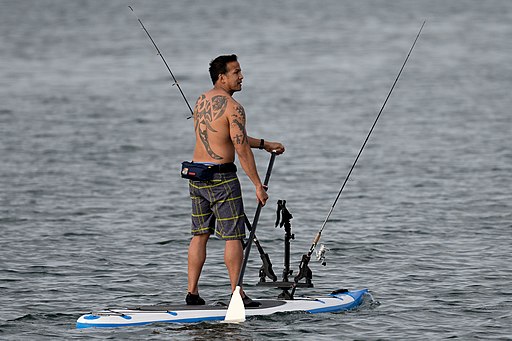
Another essential skill for kayakers is the rolling technique. This advanced maneuver lets you right yourself if you capsize in rough waters. You can flip back upright without exiting the kayak by tucking your body close to the hull and performing precise movements with your hips and paddle. Paddleboarders do not typically practice rolling techniques since remounting a stand-up paddleboard from the water is easier.
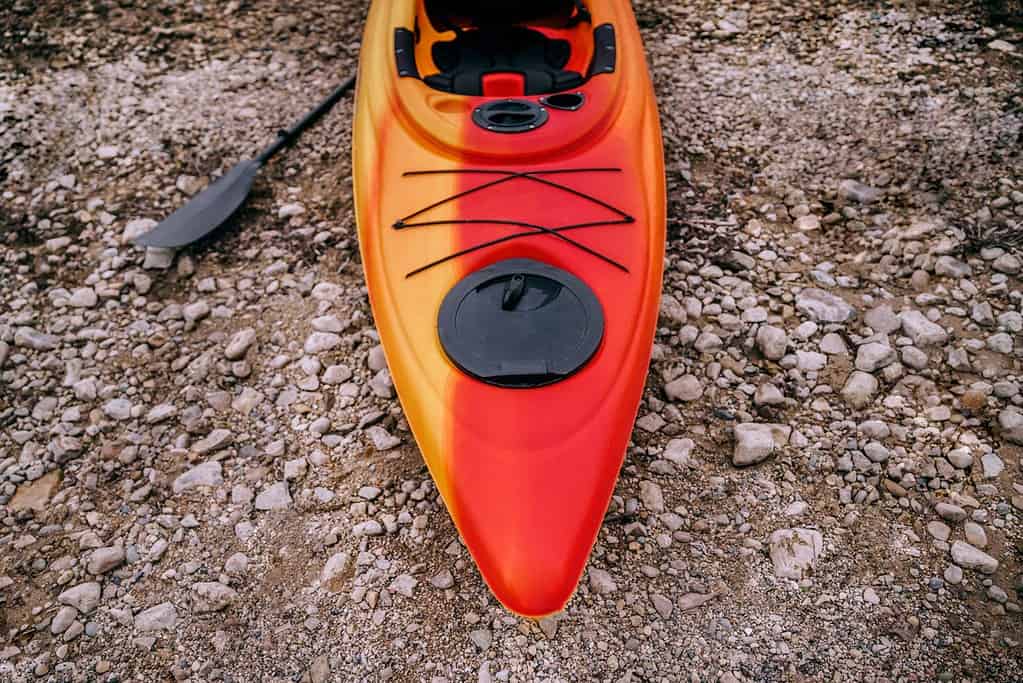
Mastering these techniques takes time and practice but will significantly enhance your kayaking and paddle-boarding performance. In our next section about ‘equipment and gear,’ we will explore what essential items are needed for each activity so that you can be fully prepared when hitting the water.
Equipment and Gear
Regarding the equipment and gear for kayaking and paddle boarding, there are several key points to consider. First, let’s talk about the different types of kayaks and paddles available. There are various styles of kayaks, such as recreational, touring, and whitewater, each designed for specific water conditions and activities. Similarly, paddleboards come in different shapes and sizes, including all-around boards and racing boards, with corresponding paddle options. Understanding these distinctions is important to choose the right equipment for your needs.
Types of Kayaks and Paddles
Choose a kayak and paddle that suit your preferences and skill level. Regarding kayaks, there are various options available, including inflatable kayaks, which are lightweight and easy to transport. They are perfect for beginners or those who have limited storage space. Carbon fiber paddles offer excellent performance and durability, making them popular among advanced kayakers.
To make it easier for you to compare different types of kayaks and paddles, here is a table that highlights their key features:
| Type of Kayak | Features |
|---|---|
| Inflatable | Lightweight and portable |
| Sit-on-top | Easy to get in and out |
| Touring | Designed for long trips |
| Type of Paddle | Features |
|---|---|
| Carbon fiber | Lightweight and strong |
| Fiberglass | Flexible and comfortable |
| Aluminum | Affordable but heavier |
Now that you have an overview of the various types of kayaks and paddles, let’s explore the different types of paddleboards and paddles.
Transition: Now, let’s delve into ‘different types of paddleboards and paddles.’
Different Types of Paddleboards and Paddles
To explore the different types of paddleboards and paddles, let’s look at what options are available for you. One popular type is the inflatable paddleboard, which offers convenience and portability. These boards can be easily deflated and packed into a compact bag, making them ideal for travel or storage. When it comes to paddle selection, there are various options to consider. Stand-up paddleboarding techniques require a paddle that is lightweight and easy to maneuver. Adjustable paddles are recommended as they allow you to customize the length based on height and preference. Inflatable paddleboards and versatile paddles make stand-up paddleboarding accessible to individuals of all skill levels. Now, let’s delve into the benefits of fitness and health.
NEXT SUBTOPIC: ‘Benefits for Fitness and Health’
Benefits for Fitness and Health
Regarding fitness and health benefits, kayaking provides a great cardiovascular workout, while paddle boarding enhances core strength and balance. Both activities offer unique advantages that can contribute to overall physical well-being. Whether you prefer the intense paddling of kayaking or the stability challenge of paddle boarding, both options provide excellent opportunities for improving fitness levels and promoting a healthy lifestyle.
Cardiovascular Workout in Kayaking
You’ll find kayaking is an excellent choice for a great cardiovascular workout. It offers numerous benefits for fitness and health, including muscle engagement in the upper body, core, and legs. Here are four reasons why kayaking is a fantastic way to get your heart pumping:
- Full-body workout: Kayaking involves paddling with both arms, which engages the muscles in your shoulders, back, and chest. Your core muscles also work hard to stabilize your body as you navigate the water.
- Increased endurance: Paddling for extended periods builds stamina and improves cardiovascular endurance. As you paddle against resistance from the water, your heart rate increases, leading to improved cardiovascular fitness.
- Low impact: Unlike high-impact activities like running or jumping, kayaking puts minimal stress on your joints. This makes it a great option for individuals with joint issues or those seeking a low-impact workout.
- Scenic experience: Besides its physical benefits, kayaking allows you to explore beautiful waterways and enjoy nature’s tranquility.
Now let’s transition into the next section about ‘core strength and balance in paddle boarding’.
Core Strength and Balance in Paddle Boarding
Moving from the cardiovascular benefits of kayaking to the core strength and balance required in paddle boarding, we find another aspect that sets these two water sports apart. Paddleboarding, or stand-up paddleboarding (SUP), is a full-body workout that engages your core muscles as you maintain balance on the board. By standing upright and using a long paddle to propel yourself forward, you are constantly activating your abdominal and back muscles to stabilize yourself against the movement of the water. This helps improve your core strength and enhances your overall balance and stability. Whether you’re gliding across calm lakes or riding waves in the ocean, paddle boarding offers a unique opportunity to develop these physical attributes while enjoying the beauty of nature.
Transitioning into the next section about accessibility and ease of learning, let’s explore how kayaking and paddle boarding cater to different skill levels and learning curves.
Accessibility and Ease of Learning
To make it easier for you to get started, paddle boarding requires less coordination and balance than kayaking. Unlike kayaking, where you must learn how to maneuver a paddle and maintain stability in the water, paddle boarding allows beginners to pick up the basics and enjoy the sport quickly. Here are some reasons why paddle boarding is more accessible and easier to learn:
- Stability: Paddle boards are broader and more stable than kayaks, providing a solid platform for beginners. Finding balance and staying upright on a paddleboard is easier, especially when starting.
- Technique: Paddle boarding involves standing or kneeling on the board while using a single paddle to propel yourself forward. Fewer technical skills are involved than kayaking, making it less daunting for beginners.
- Learning curve: Paddleboarding has a shorter learning curve than kayaking. Most people can become proficient enough to enjoy paddling on calm waters in just a few sessions.
As an outdoor recreation expert or water sports, specialist would point out, both kayaking and paddle boarding offer unique experiences on the water. While kayak enthusiasts might argue that mastering the techniques of paddling adds an exciting challenge, those looking for an easy entry into water sports may find paddle boarding more appealing.
Moving forward into the next section about scenic and adventure opportunities, let’s explore how both activities provide incredible ways to explore beautiful locations and seek thrilling adventures on the water.
Scenic and Adventure Opportunities
If you’re looking for an exciting way to explore stunning landscapes and embark on thrilling adventures, both kayaking and paddle boarding provide incredible opportunities on the water. Adventure tourism enthusiasts can enjoy the scenic beauty of lakes, rivers, and coastlines while indulging in these water sports. Here is a comparison table highlighting the similarities and differences between kayaking and paddle boarding:
| Kayaking | Paddle Boarding |
|---|---|
| Uses a kayak, which is a small boat propelled by a double-bladed paddle | It provides a higher vantage point for better views |
| Requires more upper body strength and coordination | Focuses on core strength and balance |
| Offers stability due to sitting inside the kayak | Provides a higher vantage point for better views |
| Suitable for navigating narrow waterways and rougher conditions | Great for calm waters such as lakes or slow-moving rivers |
Both activities offer unique experiences in adventure tourism. Kayaking allows you to navigate through narrow channels, explore hidden coves, and tackle challenging rapids. Paddleboarding allows you to stand atop the board, giving you an unparalleled view of your surroundings. It’s also an excellent choice for those seeking tranquility in calm waters.
Safety considerations should be taken seriously when engaging in any water sport activity. Always wear safety gear like life jackets and familiarize yourself with local regulations before heading out. Additionally, it’s essential to have basic knowledge of rescue techniques specific to each activity.
When choosing between kayaking and paddle boarding, consider your skill level, physical condition, preferred scenery, and desired level of adventure. Kayaking may be your best option if you seek fast-paced excitement with maneuverability in various conditions. However, paddle boarding might be more suitable if you prefer stability combined with peaceful exploration of calm waters.
Remember to start slowly if you are new to either activity. Take lessons or seek guidance from experienced individuals to ensure a safe and enjoyable experience. Adventure tourism in the water sports realm is full of opportunities, so choose wisely and have fun exploring the great outdoors!
Frequently Asked Questions
Can kayaking or paddle boarding help with weight loss?
Both kayaking and paddle boarding offer health benefits and can contribute to weight loss. Both activities require physical effort, engaging multiple muscle groups and promoting cardiovascular fitness. The calorie burn of kayaking and paddle boarding can vary depending on intensity, duration, and individual body composition. It is important to note that weight loss is also influenced by other factors such as diet and overall lifestyle choices. Seeking guidance from a water sports specialist can provide further insights into each activity’s specific benefits and challenges for achieving weight loss goals.
What are some safety tips for kayaking and paddle boarding?
Safety precautions and equipment recommendations are essential for both kayaking and paddle boarding. When engaging in these activities, wearing a properly fitted personal flotation device (PFD) and having a whistle or other signaling device is crucial. Additionally, it’s important to check weather conditions, know potential hazards such as strong currents or obstacles, and inform someone of your plans before heading out. Having the right equipment, including a kayak or paddle board suitable for your experience level, will enhance safety on the water.
Is it possible to do kayaking or paddle boarding with a pre-existing medical condition?
Yes, it is possible to do kayaking or paddle boarding with a pre-existing medical condition. However, it is important to consider the specific condition and consult with a healthcare professional before engaging in either activity. Kayaking safety can be enhanced by wearing a personal flotation device (PFD) and knowing proper paddling techniques. Paddle boarding offers benefits such as improved balance and core strength. Both activities can be enjoyed by individuals of different skill levels and physical conditions, but caution should always be exercised to ensure personal safety.
Can I bring my pet along while kayaking or paddle boarding?
Yes, you can bring your pet along while kayaking or paddle boarding. Many people enjoy having their furry friends join them in these water activities. However, it’s important to ensure the safety and comfort of your pet. Ensure they wear a life jacket and are comfortable being on a watercraft. Additionally, always check the specific rules and regulations of the location you plan to visit, as some places may have restrictions regarding pets on water sports activities. Can kayaking or paddle boarding be a fun family activity? Absolutely! The whole family can enjoy both kayaking and paddle boarding. These activities provide an opportunity for bonding, exploring nature, and enjoying outdoor adventures together. Whether you choose kayaking or paddle boarding will depend on your preferences and the specific needs of your family members. It is always recommended to start with basic lessons if you’re new to either activity, especially when participating with children or beginners in the group.
Are there any age restrictions for kayaking or paddle boarding?
Age restrictions and health conditions are important factors when kayaking or paddle boarding. It is recommended that individuals consult with a water sports specialist or outdoor recreation expert for specific guidelines. While there may not be strict age limits, assessing one’s physical abilities and stamina before participating in these activities is crucial. Individuals with pre-existing health conditions should also seek professional advice to ensure their safety and enjoyment while kayaking or paddle boarding.
Conclusion
In conclusion, kayaking and paddle boarding offer unique experiences and opportunities for outdoor enthusiasts. Whether you prefer the adrenaline rush of navigating through rapids on a kayak or the tranquility of gliding across calm waters on a paddle board, these water sports provide an escape into nature like no other. Both activities require similar skills and equipment, making them accessible to beginners and experts alike. Furthermore, they offer numerous health benefits, allowing individuals to explore stunning landscapes and embark on exciting adventures. Ultimately, the choice between kayaking and paddle boarding depends on personal preferences and desired experiences.
